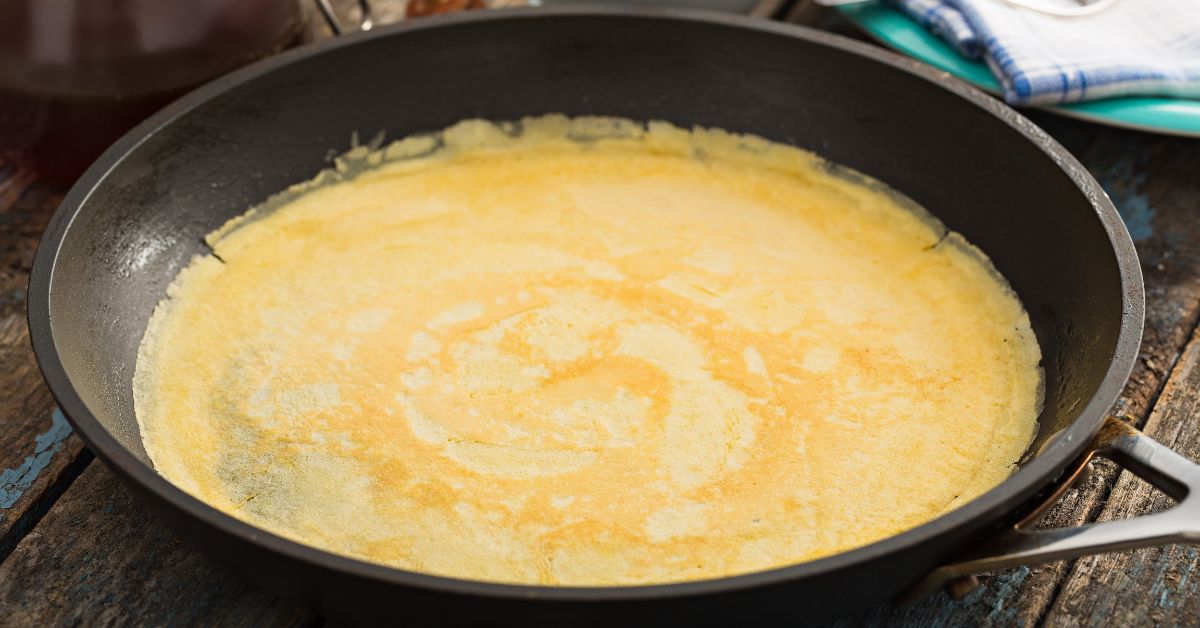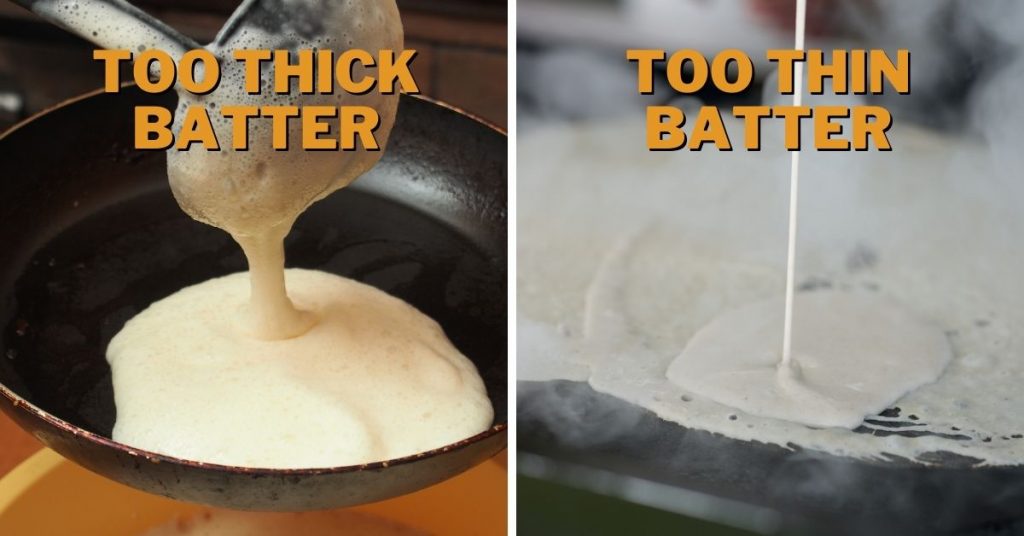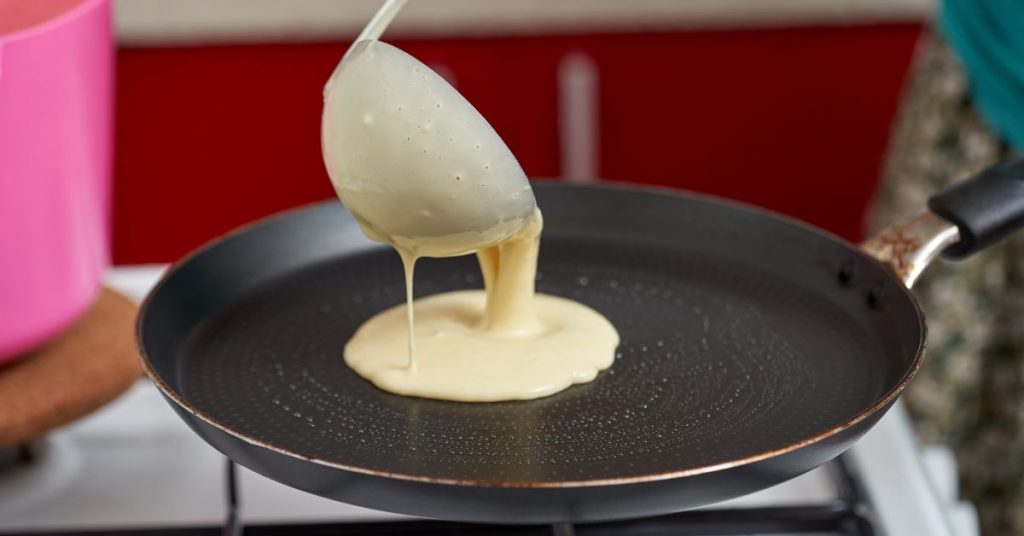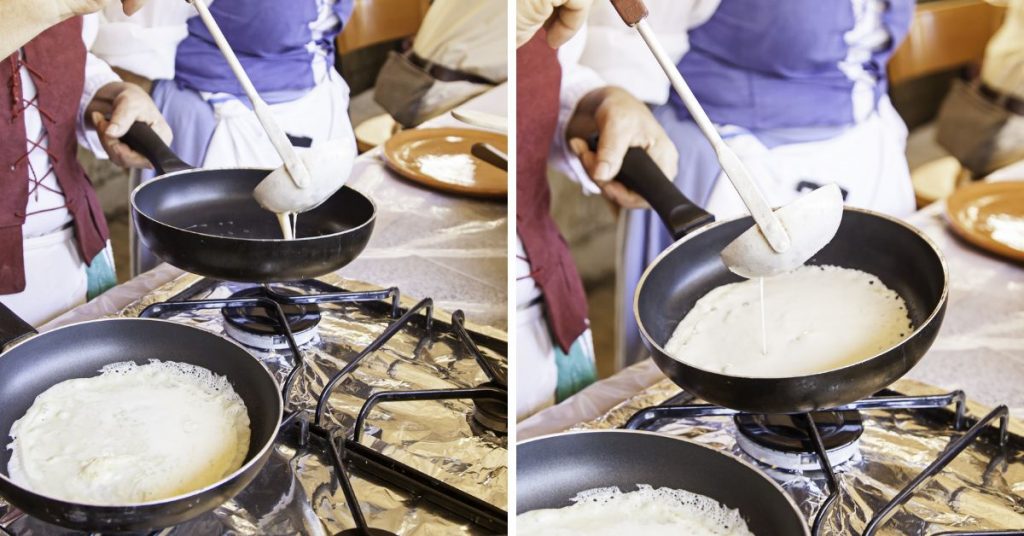Why Are Crepes Sticking to the Pan? Here’s What to Do

Crepes are an absolute tasty delight, and what’s more, they could be both a savory and a sweet snack. Light yet stating, they are the perfect option for an energizing breakfast and a delightful between-meal snack. However, they have one downside, they can be very sticky when cooking, which can ruin your crepe joy. So why are crepes sticking to the pan, and what to do about it?
Crepes can be sticky because of one or more of the following reasons: poor mixing technique, short setting time, not enough butter, too thin or too thick batter, using the wrong pan, low cooking temperature, or poor flipping technique.
Sticky crepes will not only make a mess in your kitchen but will also be a bitter disappointment for you, especially if you already imagined how tasty they would be. Although seemingly easy to make, crepes do require some skill; nothing too special, though. Therefore in the following text, I will share some tips on how to make non-sticky crepes and why they stick in the first place.
Why Are your Crepes Sticking to the Pan?
Crepes become sticky for several reasons. Therefore, it is essential to be careful during the entire process, as the slightest mistake can result in you rubbing the crepe batter off your pan.
The main reason for sticky crepes is not following the recipe. If you improvise with the recipe, especially with the flour, you will get a batter that is too thick. A thick batter isn’t what you want for crepes, as the excess flour will immediately cause the crepe to stick to the pan, even if you did everything else right.
Adding too much milk or water can give you a too thin batter, which is also something you want to avoid. Thin crepes don’t have enough consistency to resist the heat, and therefore the liquid will evaporate, leaving the gooey solids stuck on the pan.

Using the wrong pan is also a major contributing factor to sticky crepes, as they require a non-stick pan to bake properly. Using a regular frying pan will result in an absolute disaster even if you have the perfect crepe batter.
Using too little butter can be the cause behind your sticky crepes, too. Butter greases up the crepes and gives them the elasticity they need for the flipping part. If they are too dry, you won’t be able to flip them, and they will stick.
The mixing is the key here. Undermxing the batter will yield terrible results. Lumpy or not, the homogenized batter will definitely give you sticky crepes.
Also, if you don’t allow the batter to set, it will result in sticky pancakes as the ingredients haven’t relaxed and homogenized.
If you don’t know how to flip crepes, you better learn before you decide to make them. Crepes require a quick flip and don’t tolerate being in the pan for too long.
How Do You Keep Crepes from Sticking?
The first thing you need to do to prevent your crepes from sticking is to make a quality batter. Don’t go overboard with the ingredients. More is better isn’t a principle applicable to crepes.
Mix the batter all the time and add the ingredients very slowly. Make sure that all of the ingredients homogenize and that the batter is lump-free.
The next step is to let the batter sit for about 30 minutes. This will allow for the ingredients to relax in the batter, do what they need to do, and prepare for the following process.
Add enough butter to the batter and butter up the pan.
Ensure you have an excellent non-sticking pan, preferably Teflon or granite, to effortlessly and efficiently cook your pancakes.
Use a rubber spatula if you aren’t very handy and can’t seem to get the hang of crepe flipping. Don’t compromise with this, as you will need the spatula to be flexible when you flip the crepes. A metal or a wooden spatula won’t do the trick.
Preheat the pan, and that’s a must. Crepes will stick if you put them in a cold pan, gradually increasing the temperature. The temperature needs to be high from the get-go.
Is a Crepe Pan Necessary?
A crepe pan is necessary when it comes to crepe-making, and there’s no grey zone here. Your best options are either Teflon or a granite pan, as they won’t stick.
Another thing to keep in mind is the shape of the pan. The space from the bottom of the pan to the opening needs to be very small, meaning it needs to look almost like a circle with a handle. The pan walls should be minimal.
There are also different sizes of crepe pans, so choose the one that suits your needs the most. And remember, under no circumstances should you use a regular frying pan.
However, if you don’t have a special crepe pan, you could use another non-stick pan as a substitute, but the higher pan walls will make things more difficult for you.
Can You Make Crepes Without a Non-Stick Pan?
You cannot make crepes without a non-stick pan. Crepes are thin and light, and the crepe batter is very fragile. A regular pan may be excellent for other things that have a more resistant consistency, but crepes require gentility.
No matter how well you make the crepe batter and how well you grease up the pan, they will undoubtedly be ruined if you don’t use a non-stick pan.
How Hot Should the Pan Be for Crepes?
Crepes don’t do well on gradual temperature increases, quite the opposite. Therefore, the pan must be very hot when you pour the crepe batter.
The batter needs to immediately harden once you pour it into the pan so that you can easily flip the crepe. If the pan isn’t hot enough, the crepe will stick instead of cooking.
How to Pour Crepe Batter Into the Pan?
There are two ways to pour the crepe batter into the pan, pour in circles or pour and turn the pan. Before I get into the pouring techniques, I must stress that whichever method you choose, the pouring needs to be gentle and not rushed.
Also, you need to adjust the batter quantity that you pour according to the diameter of the pan. Don’t overfill the ladle if your pan is smaller-sized, as you will have more batter than your pan has the capacity to coo, and it will stick. The opposite isn’t good either, so don’t put half a ladle in a large pan, as the crepe will be too thin and, again, stick.
And just a warning, be prepared to throw away the first crepe; nothing seems to be suitable for it.
If you choose to pour the batter in circles, that doesn’t mean that you should make a circle with it, leaving the middle of the pan empty. You should pour the batter into the middle of the pan and smoothen it out with the bottom of the ladle with circular movements.

If you decide on the second method, moving the pan, then hold the pan in your hand, lift it up from the plate, pour the batter and slowly move it until the batter has filled the entire bottom.

I’d recommend the first method if you are new to crepe making, as the second one requires practice.
Do You Flip Crepes? How?
Flipping crepes takes practice, so don’t expect to get it right the first time. However, it isn’t rocket science, so you will get it pretty quickly.
One minute after you pour the batter, move the pan forward and backward with quick movements to check if the crepe sticks. If it sticks, give it some more time; it’s ready to flip if it doesn’t.
Lift your pan up and tilt it forward. Then with one swift movement, bring it up. This will make the pancake flip.
There’s an alternative method for which you will need a rubber spatula. It’s basically the same as flipping pancakes. Just place the spatula under the crepe and simply turn it over.
How Do You Remove Crepes from Pan?
Just like the flipping, here you will need some technique too. When your crepe is done, gently tilt the pan over the place, preferably covered with a cotton towel, and place the crepe slowly on it.
The closest description of the result you want would be to spread the crepe on the towel-covered plate.
As I already mentioned, crepes need gentility, so don’t rush any of the processes, from making to eating.
Will Crepes Stick Together?
Crepes will stick together because they are moist when you take them out of the pan. Therefore it isn’t recommendable to pile them up one after another. The crepe will absorb part of the moisture, another part will evaporate, and another will be absorbed by the towel.
This happens relatively quickly, so by the time you are done with the next crepe, the previous one should be already dry. Still, just to be on the safe side, you could set two towel-covered plates to put the crepes in. That way, you won’t risk them sticking together.
If your crepes stick together, it is hard to separate them while keeping their integrity, so it is best to avoid this from happening in the first place.
Is It Better To Make Crepe Batter in Advance?
Crepe batter needs a minimum of 30 minutes to initially set. The longer the batter sits, the better the pancakes. Therefore, it is absolutely OK to make the batter in advance.
The batter is safe in the fridge for up to two days, but not a minute more. If you plan to make the batter and cook the pancakes later, go for it.
The longer setting time would give a chance for the ingredients to rest and bond, giving you more stable and non-sticky pancakes in return.
However, don’t forget to give the batter a good mix before you start pouring the pancakes, especially if it’s been sitting in the fridge.
Does Stove Type Matter for Baking Crepes?
The stove type doesn’t matter for baking crepes, though electric plates make it easier for you to bake crepes compared to gas plates. However, since it’s your stove and you know how to operate it, if your crepes are unsuccessful, it won’t be because you had the wrong stove.
